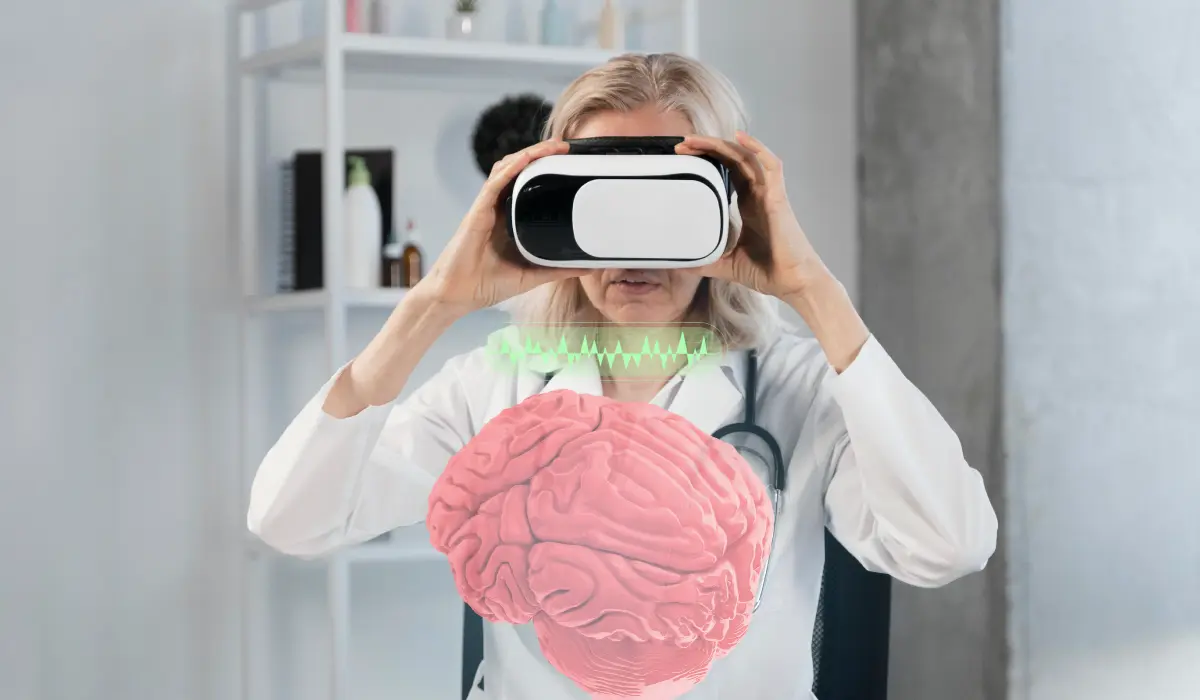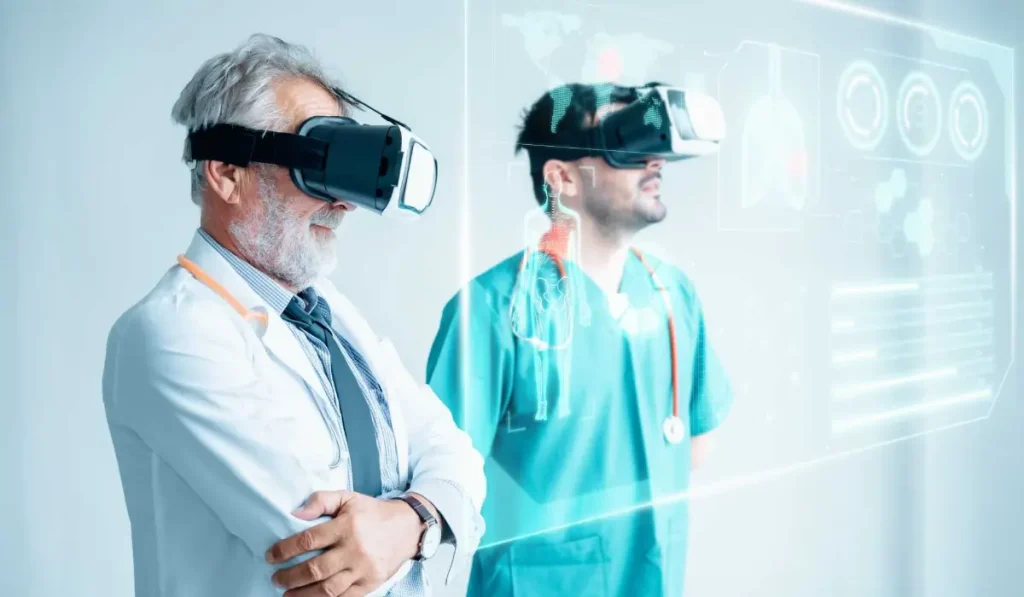Augmented reality is changing the way doctors are doing operations and surgeries. Recently, Physiciansof Standford Medicine did an ablation procedure after obtaining the full consent of their patient. However, this is not the first time AR is used by the healthcare industry.
In our blog, we will talk about real-life examples of augmented reality and the challenges it imposes.
Understanding Augmented Reality
AR technology brings digital data to the real world through smart gadgets, glasses, tablets, and smartphones.
For easy understanding and quick analysis, it presents the information in 3D models which can be seen and touched. Visuals, graphics, texts, and sound effects make these models even more real and interactive.
Due to these capabilities, AR has great applications in several industries like retail and manufacturing. But the technology is like a blessing for the healthcare industry.
What is the Need of Augmented Reality in the Healthcare Industry?
The healthcare industry deals with complexity and requires precision in the diagnosis and treatments. Traditional medical practices and techniques require doctors to rely on their skills to better understand a patient’s condition.
Furthermore, understanding complex medical concepts quickly and ensuring high accuracy of the treatments is also a challenge.
The visualization power of augmented reality not only mitigates these challenges but also improves accuracy and precision.
Real-World Examples of AR Transforming Healthcare Practices

Here’s a glimpse into some of the most promising real-world applications of AR in healthcare:
1. Medical Training and Education
Textbooks and static anatomical models don’t thoroughly explain the complex topics. AR offers a far more dynamic and interactive learning experience to the students.
Imagine a class where students learn about the human heart anatomy through a virtual 3D human heart model.
Real-life examples
- ARnatomy is one of the apps that use AR for medical training. Students can learn about human anatomy by scanning their bodies directly from the app.
- Touch Surgery is an AR used for surgical training. It helps aspiring doctors, and surgeons, to improve their surgery skills on virtual patients.
2. AR in Medical Imaging
Traditional 2D X-rays or CT scans make it hard for doctors to accurately read all the details. AR tools enhance the visualization of medical scans through 3D models of organs or tissues, helping doctors easily spot abnormalities.
AR is also valuable in procedures such as needle biopsy or catheter placements. These procedures need to precisely locate the targeted area which is otherwise hard with the naked eye.
Real-life examples
- AccuVein is one of the companies investing in AR technology to improve critical procedures in the healthcare industry. Their handheld AR-powered device helps nurses easily locate veins in the patient’s body to draw blood samples. This not only reduces patient discomfort but also saves time and resources.
3. AR for Medical Consultation
The applications of AR technology go beyond physical medical procedures and surgeries. Imagine a doctor sitting in a remote location using AR devices or apps to consult with a specialist in another part of the world.
Both can virtually analyze the patient’s medical scans or reports to find an effective treatment. This use of AR in the healthcare industry promises better patient care even in remote locations or areas with fewer medical facilities and specialists.
Also Read: 5 Features Your Health Insurance App Needs to Have for Stress-Free Claims
4. AR for Surgeries
Surgical procedures like removing brain tumors are often complex as they require access to intricate and delicate structures of the brain. Even the most experienced surgeons cannot
precisely navigate those areas through medical tools and equipment.
This increases risk and complications making such surgeries less successful. AR technology helps surgeons get clear views of organs and operate with great accuracy.
It also improves the time to recovery and helps in determining better surgical procedures and requirements.
Real-life examples
- In 2020, the first AR-powered spine surgery happened on a 78-year-old patient. Surgeons wearing AR headsets approved by the FDA achieved 100% clinical accuracy in the surgery.
- Microsoft’s HoloLens 2 device is transforming how medical professionals are planning surgeries and treatments. The device works on augmented and virtual reality and allows doctors to not only visualize but also interact with the virtual environment.
5. AR for Patient Education
Other than improving the outcomes of treatments and making surgeries successful, augmented reality is used for educating patients too. Patients can learn about their medical conditions, how drugs work in their bodies, and monitor the progress of their treatments through AR-powered apps.
By empowering patients with knowledge, augmented reality helps patients in easily explaining the real symptoms of their conditions. It also motivates them to actively manage their well-being. This is one of the greatest benefits of using AR in the healthcare.
Real-life examples
- Know My Heart is one of the real examples of using augmented reality in healthcare apps. It lets patients check their pulse at home and detect whether they have atrial fibrillation or not.
- Know My Beat is another AR app to educate patients about the early signs of atrial fibrillation- a condition where heartbeats are irregular and can lead to heart stroke. It also answers questions about the current health conditions of patients diagnosed with AF.
Current Challenges of Using Augmented Reality
Though there are many benefits of using AR in the healthcare industry, it also pose serious challenges such as:
- Privacy and Security: The healthcare sector is heavily regulated by strict protocols and standards like HIPAA. So, before using applications built on augmented reality healthcare providers must ensure they are safe and work as per industry standards.
- Accessibility: Healthcare providers might hesitate to quickly adopt AR solutions until their long-term benefits are not clear.
- New Standards: Previously set guidelines and protocols for this industry need to be upgraded with each upgrade in the technology.
- Technical Training: AR solutions are developed to remove complexity, but they can add more for those with limited tech knowledge. As the healthcare industry has professionals with less technical knowledge, training and educating them is again a challenge.
Conclusion
The rising cost of medical treatments and emergence of new diseases have increased the risks more than before. Therefore, the healthcare industry cannot be untouched by emerging technologies. These technologies are paving new paths to provide better and personalized care to patients. Augmented reality is one of them. From using AR for medical training to facilitating critical surgeries beyond operation theatres, it is truly transforming the industry.



